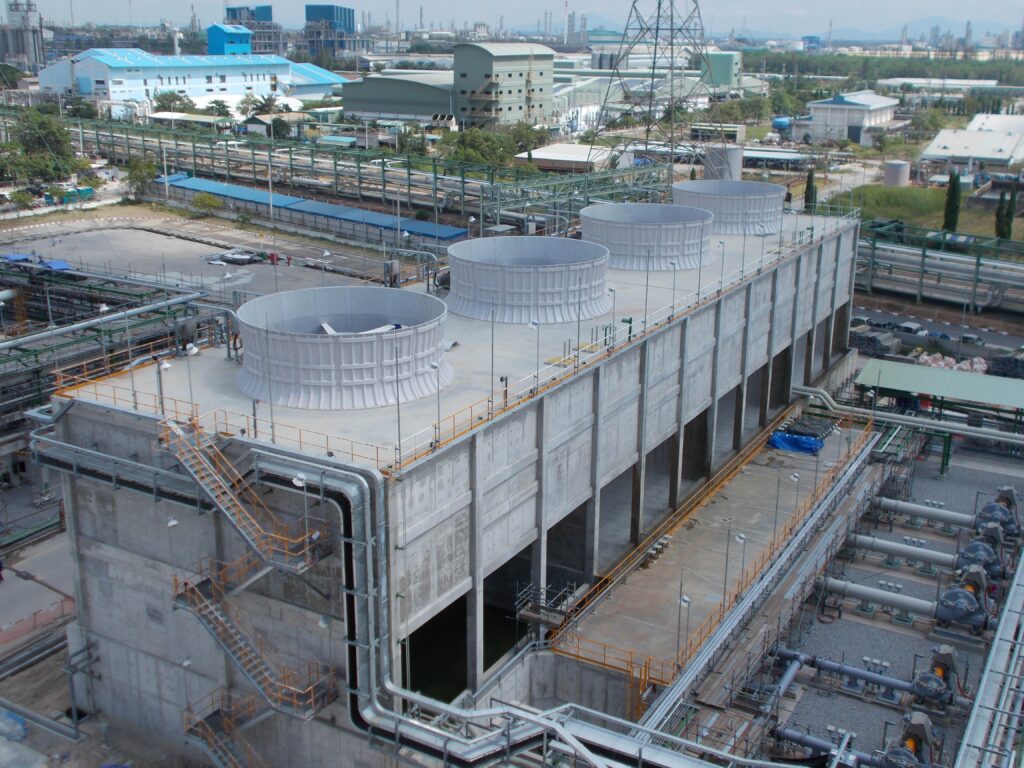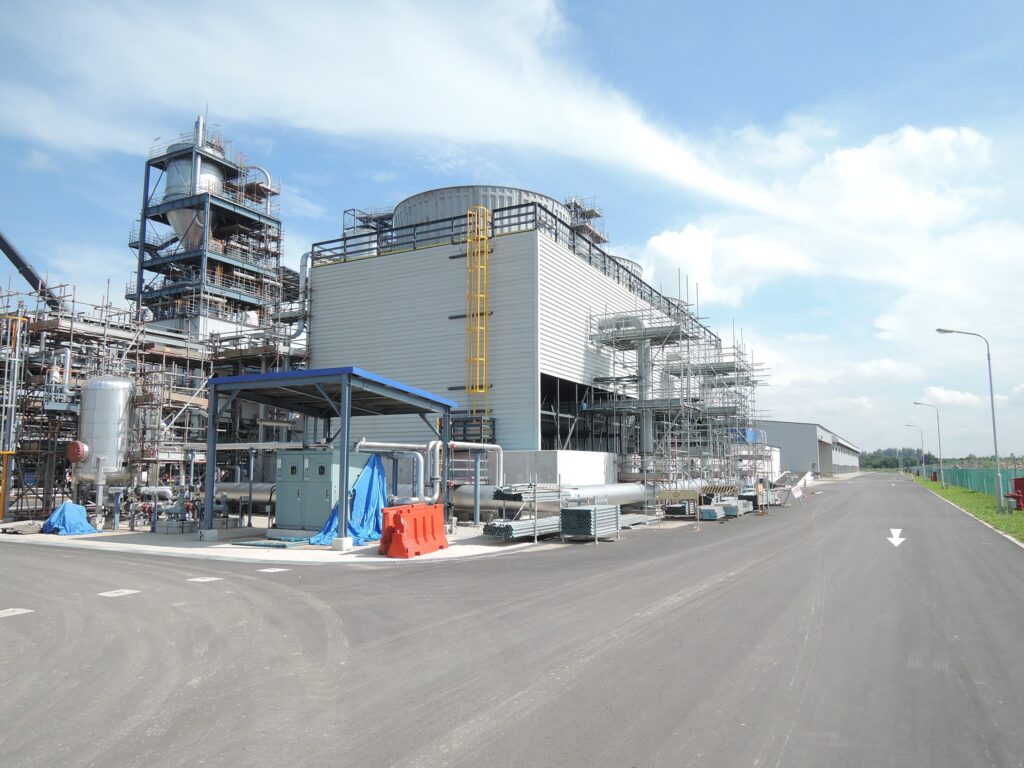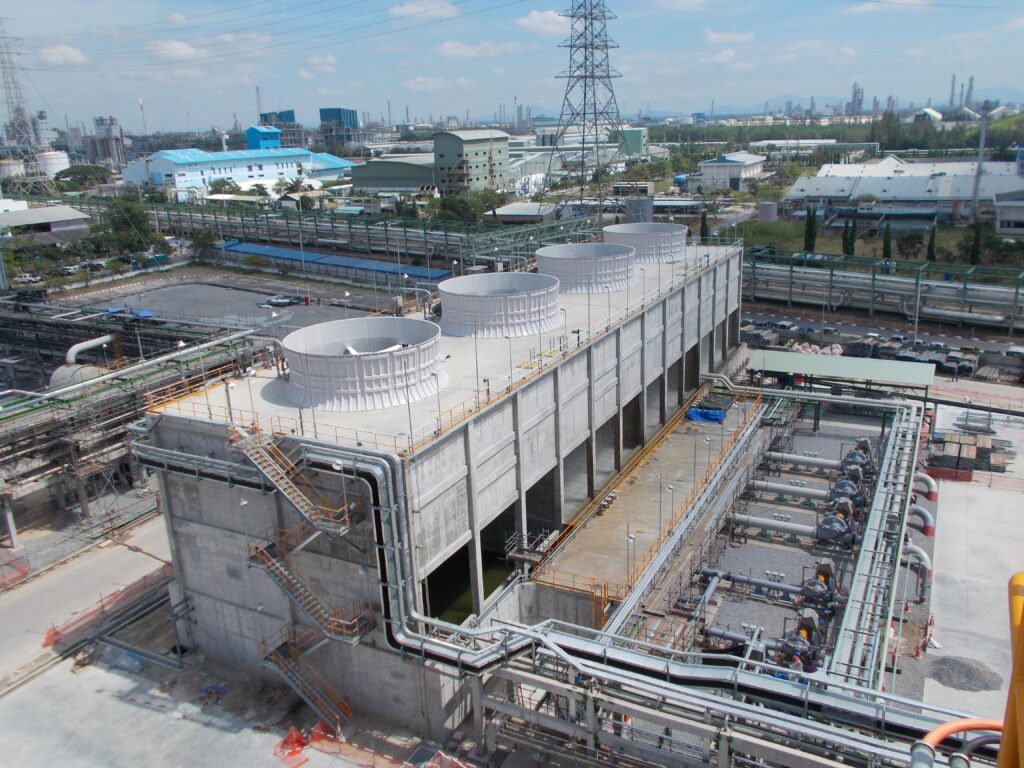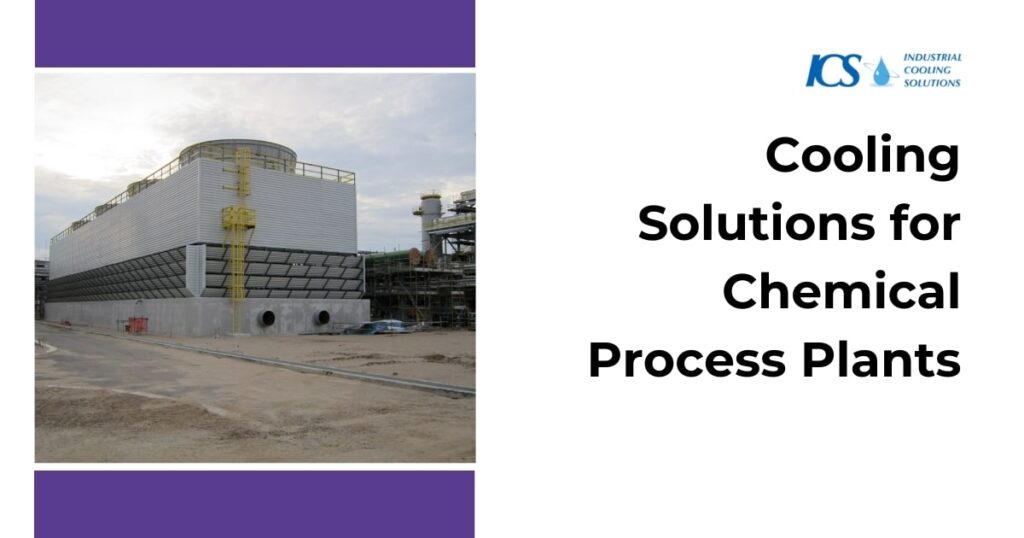Cooling Solutions for Chemical Process Plants
Here’s how you can improve the performance of a chemical process plant by installing an effective cooling system. From traditional concrete cooling towers to durable FRP field-erected cooling towers, here’s everything you need to know about finding the best cooling solution for your chemical plant.
 Why Do You Need A Cooling Tower
Why Do You Need A Cooling Tower
A chemical process plant is a facility used to produce or purify chemicals. The plant requires a reliable and efficient cooling system to properly cool the water and keep the production process running smoothly. A cooling tower is an essential piece of equipment for any chemical process plant as it maintains optimal process conditions by delivering the proper volume and temperature of cold water at all times.
There are several reasons why a cooling tower is necessary for a chemical process plant:
- To remove process heat from the equipment to maintain stability in the chemicals being produced
- To maintain the proper temperature required of the chemicals being used
- To keep the production area cool and comfortable for workers at the plant
Without a properly functioning and efficient concrete cooling tower or FRP field-erected cooling tower, a chemical process plant can quickly become unstable and potentially dangerous.
Types Of Cooling Towers On The Market
Each type of cooling tower has its own set of benefits and drawbacks that need to be considered when choosing the best option for a chemical process plant.
Field-Erected Cooling Towers
Field-erected cooling towers, are highly efficient and have a long lifespan. They also offer the advantage of being able to be easily customized to the specific needs of a chemical process plant.
FRP Cooling Towers
FRP cooling towers, or fibreglass-reinforced polymer cooling towers, are the most expensive type of tower on the market, but they do offer the best combination of efficiency and lifespan. They are also the most resistant to corrosion and can be made in any size or shape. FRP cooling towers are usually the best choice for chemical process plants that require the highest level of cooling efficiency. Typically made from fibreglass reinforced plastic, FRP cooling towers are highly durable and chemically resistant. Virtually maintenance-free, they are also far lighter in weight and more flexible, meaning they’re easier to transport.
When choosing the best cooling solution for a chemical process plant, it is important to consider the specific needs of the plant and the budget that is available. The type of cooling tower that is chosen should be able to provide the required level of cooling while also being able to withstand the corrosive nature of the chemicals that are being used.
Tips For Choosing The Right Cooling Solution
 When choosing a cooling solution for your chemical process plant, it is important to consider the specific needs of your plant. These include the following:
When choosing a cooling solution for your chemical process plant, it is important to consider the specific needs of your plant. These include the following:
- The size of the cooling tower
- The type of fill material
- The fan system
- The location of the cooling tower
You should also consider the climate in which the plant is located, as this will affect the type of cooling system that you need. If you are not sure which cooling solution is right for your plant, you should consult with a cooling expert.
One of the main benefits of adding any type of cooling tower to your plant is that it will be able to effectively and efficiently cool water to within a few degrees of the ambient air temperature, which helps to keep the production process running smoothly. And this will save your business precious time and money in the long run.
Field-Erected Cooling Towers Best Practices
 If you require a custom solution when searching for a cooling tower, your best option is to go for a field-erected cooling tower. This style of structure can be made completely customized to your business needs and is usually assembled on-site too. Here’s our guide to field-erected cooling tower best practices.
If you require a custom solution when searching for a cooling tower, your best option is to go for a field-erected cooling tower. This style of structure can be made completely customized to your business needs and is usually assembled on-site too. Here’s our guide to field-erected cooling tower best practices.
To keep the cost of running a field-erected cooling tower low, you’ll need to keep on top of maintenance. And regularly cleaning your new cooling tower will also prevent any airborne diseases from being spread throughout the work environment. So, start with a visual inspection of the appearance of the cooling tower. Check if any parts require cleaning or repair work. If you do identify some issues, here’s what to do.
- Since cooling towers are prone to limescale, if you notice a build-up, you’ll need to remove this to prevent damage and poor performance.
- Check for bacteria too and if required clean the fan thoroughly to ensure the air is flowing correctly through the cooling fan. Cleaning should also cover the fill material and drift eliminators which can become dirty over time. But failing to keep these components clean can lead to slime, bacteria, algae and limescale, lost performance & costly replacement.
- Don’t forget to check the water pump, or risk paying a fortune on energy bills. A well-maintained cooling tower will perform far better than one left to become dirty, clogged and broken.
- Last but not least, test the quality of the water being used within the cooling tower. If necessary, have the water treated by a professional 3rd party supplier to ensure the system continues to run smoothly.
However, you should also be aware that there are additional recommendations and best practices specifically for refineries, petrochemical and chemical operations, natural gas liquids extraction plants, natural gas liquefaction plants and other onshore facilities that use chemicals. API code- RP-752, for example, provides guidance for managing the risk of explosions, fires and toxic material releases to on-site personnel. And this form of risk assessment is essential to protect your employees while working within a hazardous environment.
At Industrial Cooling Solutions, we specialize in empowering our clients by providing cooling tower engineering and construction, thermal upgrades and replacement cooling towers worldwide. So no matter where your plant is located, our experts can help you to repair, maintain or replace your cooling tower.

